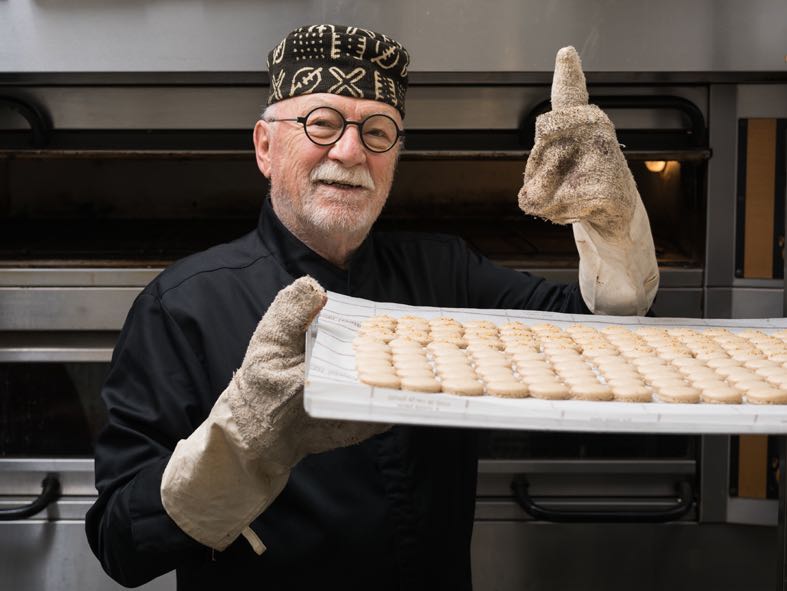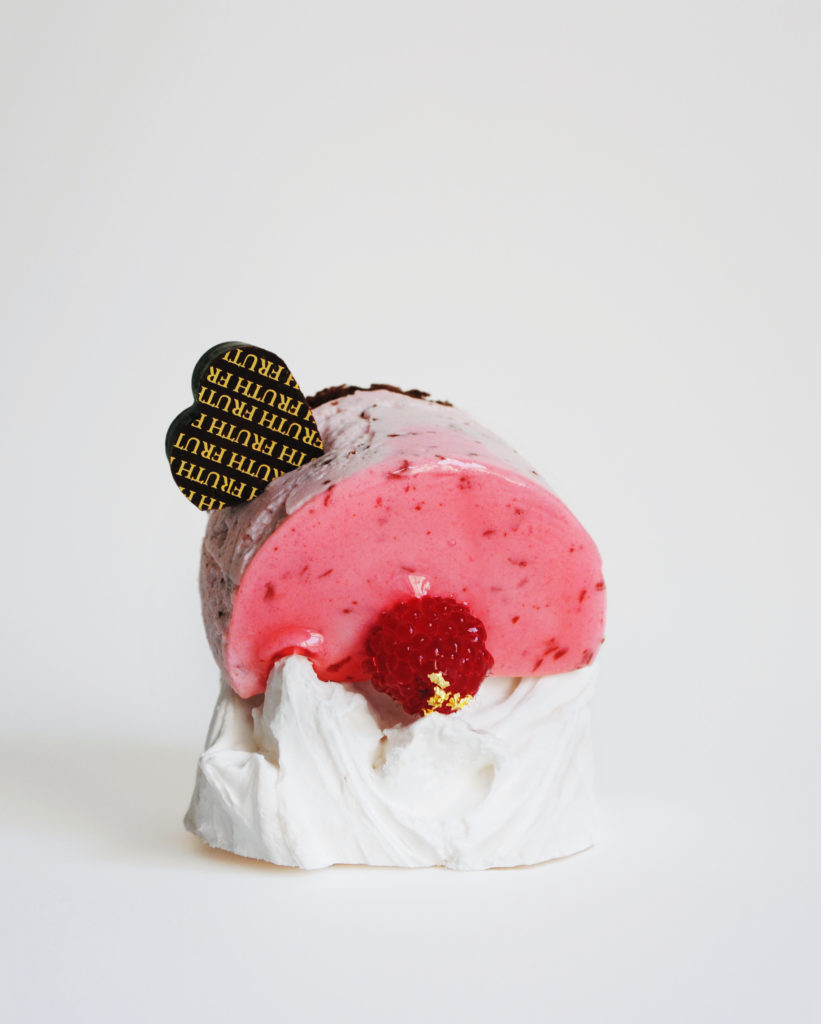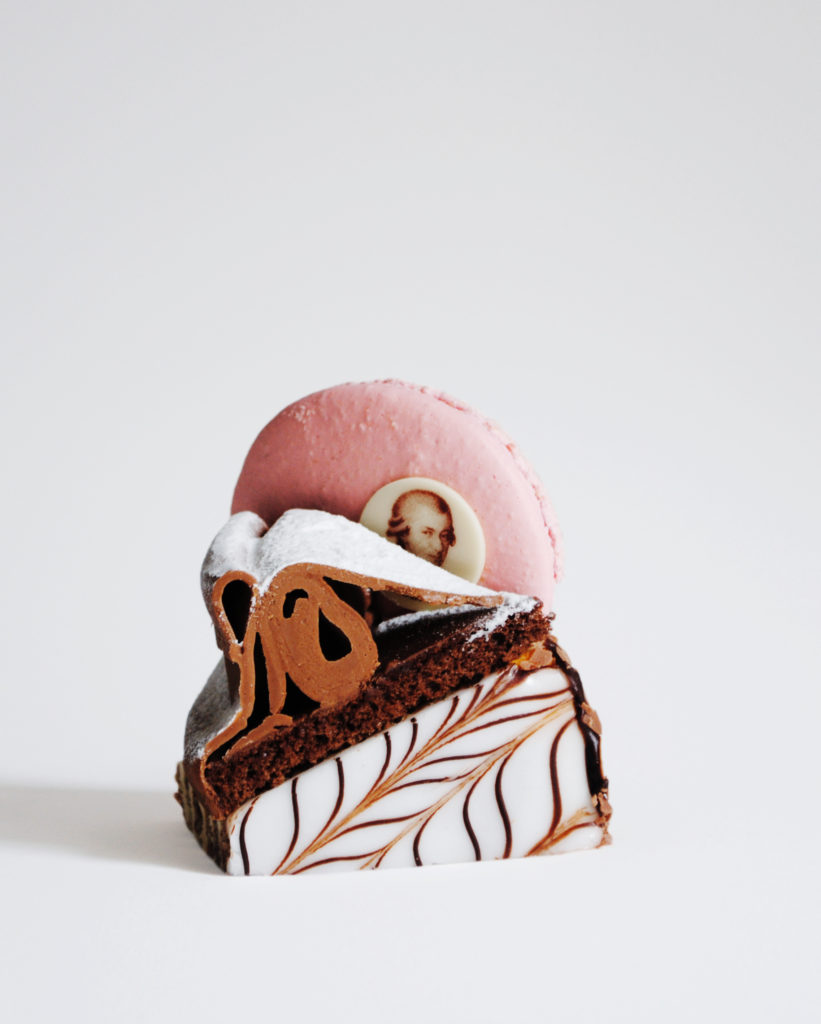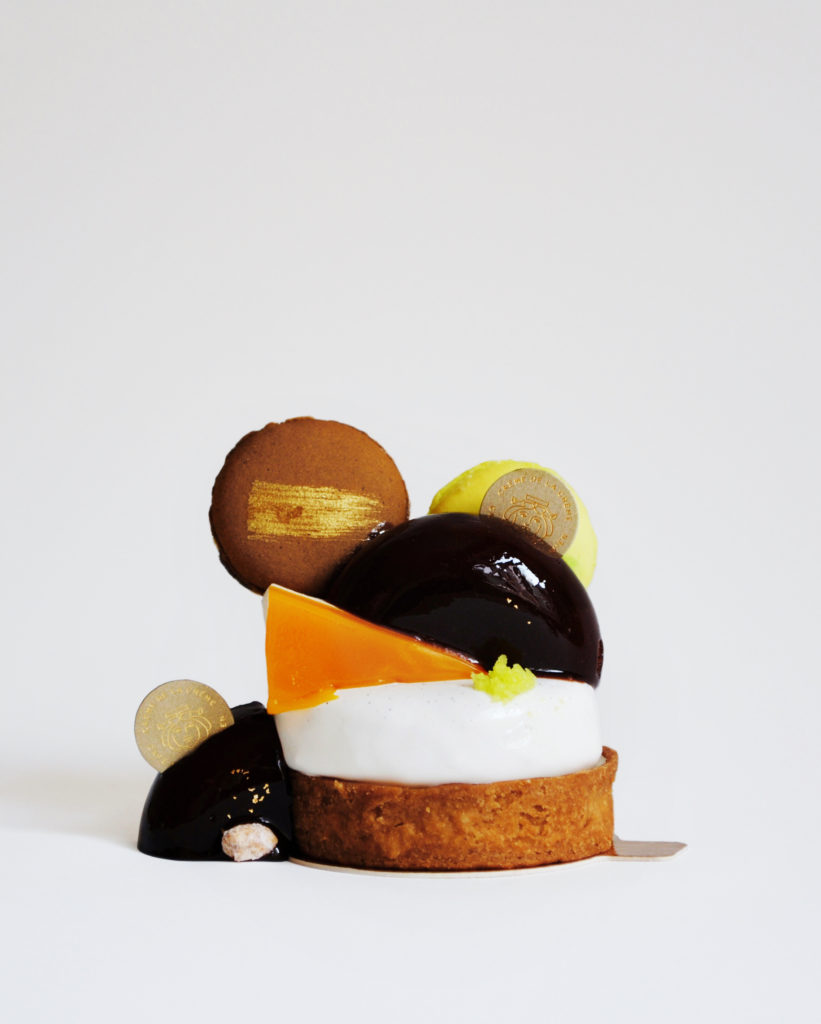For the exhibition Taste The Now at the Vienna Design Week, Orlando Lovell spoke to five top Viennese pastry chefs about tradition, politics, culture and the future of the profession in Austria in the 21st century. Eduard A. Fruth, the son of a former Konditormeister at Hotel Sacher, was one of the pastry chefs featured in the exhibition. Throughout his career, Fruth has trained pastry chefs in Vienna for 30 years and also spent time in Japan helping to set up Viennese confectionery outlets for the Takaki Bakery. Today, in his 80s, he both runs and bakes for his two Chocolaterie Pâtisserie shops in Vienna.
Orlando Lovell: What does the phrase “traditional Viennese pastry” mean to you?
Eduard A. Fruth: The so-called Viennese confectionery or Viennese pastry – the Viennese don’t say cake, they say Mehlspeise – doesn’t actually exist. The only thing that is originally Viennese is the Sachertorte. Everything else is a mixture from the time of the Habsburgs. All the princes and princesses that came to Vienna to visit the emperor brought their entourages, and their chefs. They cooked here and the public became aware of their dishes. At the same time, they also hired people from Vienna or the cook fell in love with a Viennese girl or vice versa, so that a pastry consortium grew up in Vienna. For example, everything that involves sponge comes from French cuisine as well as soufflés etc. If you asked a Frenchman today about Salzburger Nockerln [a famous sweet Austrian soufflé dessert, ed.], he would naturally have zero idea what they are. But it actually originates from France. Everything that is cooked in water, like dumplings, comes from Czech cuisine. The pulled pastry of a strudel is a relic from Turkish cuisine, and so on.

What could the business of being a Viennese pastry chef look like in the future?
The future of these pastries goes a bit in the direction of design, because a new generation is now growing up that naturally wants to do everything differently. That is obvious. I taught at a vocational school for confectioners for 30 years. I know what makes these people tick. Many people give up the profession after their apprenticeship. And now there are very few left because, firstly, they earn very little and, secondly, it’s a profession with a lot of personal commitment. Family life is limited by the weekend work, for instance. But we also work seasonally, in the summer and winter, when the others are on vacation. During the big holidays, like Christmas or Easter, we have peak season.
There are only a few men left in our profession, the women dominate. Since I’ve been running my business here, with the exception of three boys, I’ve only had girls as apprentices. If you look at the vocational schools, they are full of girls, a boy does not want to be a pastry chef these days. That’s really interesting. But I couldn’t say why, because fashionable professions like car mechanic or bicycle mechanic – these male-sporty things – are also lagging behind.
Do women work differently in the kitchen to men in your opinion?
No, they don’t work differently. On the contrary, the male chefs still get the chefs’ hats. If you look at how the chefs’ hats are distributed, there are very few women in Austria who have one.

Have you been baking your whole life?
I’ve been doing it since I was 15 years old in 1954. I trained with my father until 1957. I started when I was 15 years old.
Were you born in Vienna?
No, I’m Tyrolean, my mother is French. I am a francophile Tyrolean.
I did my apprenticeship with my father, he had his own company and insisted that I learn this profession. I never wanted to learn it. Never! That would have been the last thing I wanted to learn, because I saw what a wreck my father was, how he worked and how bad-tempered he was all the time. So I thought, I’m not going to do that. I wanted to build bridges or roads, that would have been something for me. But they said, “You’re too stupid for the Higher School Certificate”. So I learned this profession and was unhappy with it. I was stuck in the remotest corner of Tyrol – horrible.
When did you leave Tyrol?
After my apprenticeship. I went everywhere. It started with Innsbruck, the capital of Tyrol, because the vocational school was in Innsbruck, I was always there. Then I started working until I had completed my three years as a journeyman. By then I was already in Vienna, and then I took the master craftsman’s exam, because I really wanted to go to America with a friend. He went, I stayed here. Because of a woman – so it goes.
Then I switched to gastronomy and started cooking, doing cold dishes and pâtisserie. Then the chef came to me and said, “We need a teacher at the school.” I said, “I’m not going to teach, I’m not a teacher type, the students would be worse off with me, I can’t do that!” I’ve always been a bit of a ruthless guy, I’m not a softie. That’s not good for this kind of job either, it’s impossible. But then I went there, did my teaching degree, and became a teacher. First I taught in the hospitality industry, then they transferred me to the confectioners. I stayed with the confectioners until I retired.

So a quiet teacher’s life then?
I always worked somewhere else during the vacations. First of all I needed it and secondly it was a welcome change. You have to be terribly careful as a teacher not to get into a rut where nothing changes for the next five or ten years. I actually learned most from my students. Time and again I had the problem – or the need – to go into a class and motivate these people to listen. Teaching a practical subject is relatively easy because everyone gets an assignment. But learning dry theory like food science and the gluten content of flour don’t interest young people at all. And it’s getting worse and worse, because the industry supplies convenience products that are “foolproof”. You can hardly do anything wrong anymore. That’s a problem!
What did you do after that?
I spent some time in Japan. I asked the Vienna Municipal School Council for a leave of absence and went to Japan for a year. Then I offered to come back every year during the vacations to bring news and to check up on things. So I returned to Japan every summer for 20 years. To Hiroshima and to Tokyo where I had to give demonstrations in the [Takaki Bakery, Andersen] stores. There was always an open bakery where I stood and pulled strudel dough. People came and paid admission to watch how to make real Viennese apple strudel. That was a booming business in Japan.
Were the Viennese recipes modified to suit Japanese tastes?
Yes and no. The main problem is the raw materials, which are not the same as here. The flour is a big factor, and they ended up buying the flour in California. They also buy the cherries in California. It’s all incredibly expensive. They love vanilla in Japan. Vanilla in all variations. When they hear vanilla, taste it, smell it, they are propitiated. Our Christmas cake, for example, was a light sponge cake filled with vanilla cream and strawberries on top. We started in the summer, making 250,000 of them on an assembly line, then they were frozen to be sold at Christmas.

What significance does tradition have for you?
A very big one. Look at the cake situation in Vienna or in Austria. It’s very traditional and you have to actively maintain that. I always told my students: “You simply have to maintain tradition, it was given to us. You can do whatever you want, but if you make a Sacher cake or a Gugelhupf or an apple strudel, then please do it the way it should be done. Don’t get caught making the Sacher cake with margarine! Or the apple strudel without nuts or sour cream!”
Do you still experiment?
I can’t experiment anymore, you can’t reinvent the wheel. I have a base, I know how chocolate harmonises with various other products. The other day, however, I had a problem: I wanted to make chocolate with chili. There was this movie Chocolat and my grandchildren asked, “Will you make us hot chocolate with chili?” I was like, “Sure!” so I warmed the chocolate in the milk and grated cayenne pepper into it. They tasted it and said it wasn’t spicy. Yeah okay, so I tried again. I believed I could work it out but I really reached my limits. It kept tasting sandy. And then I came to the conclusion: chocolate kills chili! But the question was, how do I get the chili into the chocolate? And I was really stuck until someone said “cook the chili in the cream”, simple as that. Oh God, of course! I then ran to the market, bought dried chilies and heated them up with the cream and: Hooray! It worked. So much for not experimenting then. Of course, I’m still experimenting.
Do you have a favourite cake?
That depends on my mood. It’s difficult to say.

From childhood, perhaps?
I threw my first cake on the ground – down a stairwell from the second floor. On my first day as an apprentice in my father’s bakery, I was standing in the bakery and my father called upstairs on the telephone to say that the customer was there and wanted the cake they had ordered: “What’s with the cake?!” – “Yes, it’s ready”. He wanted to know if he could finally have it, so I took the cake and ran because the bakery was on the second floor and he was downstairs waiting, but I tripped and ended up throwing the cake right at his feet. He was so gobsmacked. We then somehow cleaned up the cake and showed it to the customers. She felt so sorry for me and had to laugh so much that she said we have to make a new one now – and she came back for it an hour later. That was my first cake and there’s actually not much from that time that I would still like to have today.
But I ended up being very happy in this beautiful, creative profession.
Interview by Orlando Lovell
Read more about Eduard A. Fruth, or visit Chocolaterie Pâtisserie Fruth in Vienna here.






